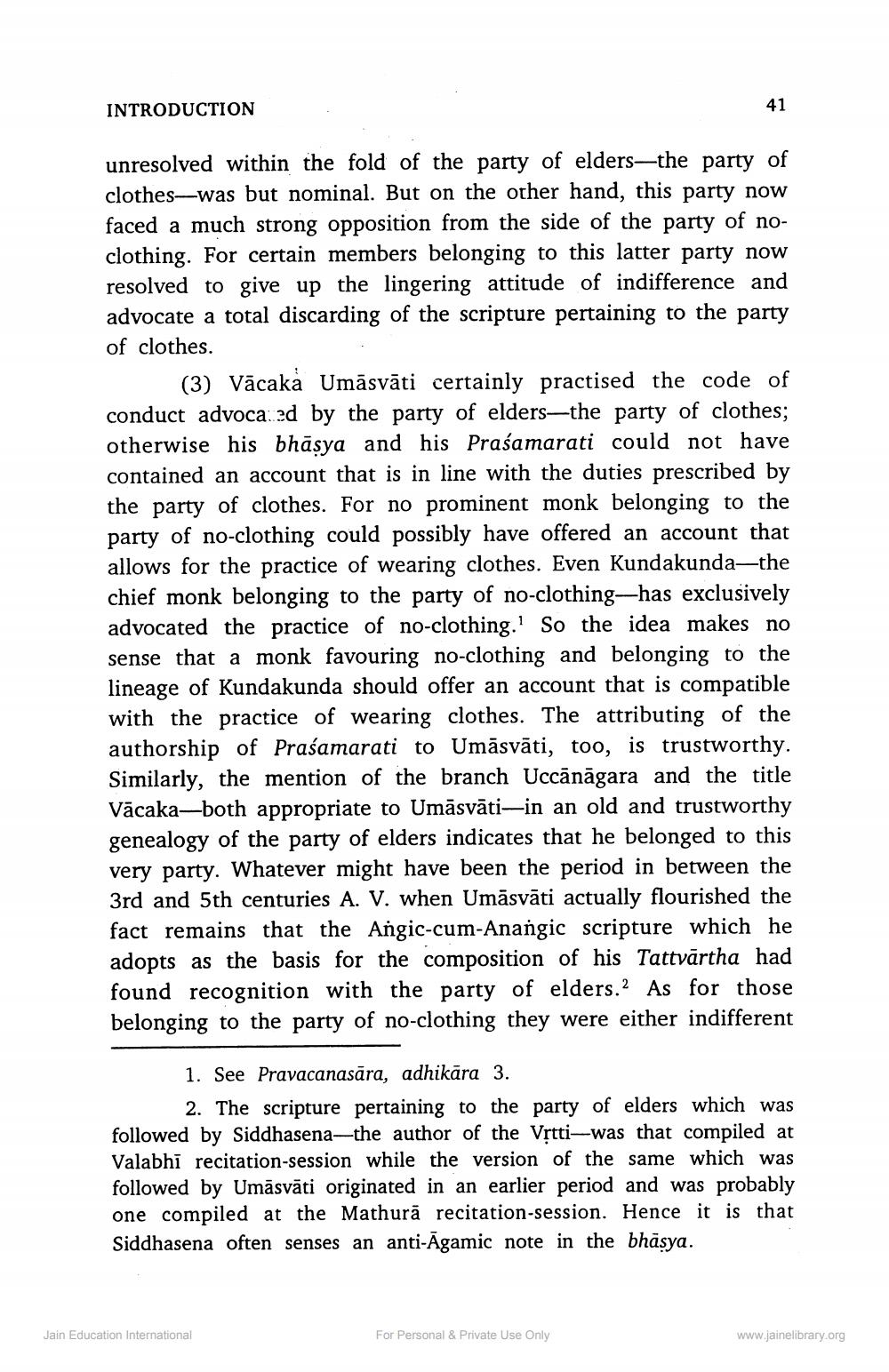________________
INTRODUCTION
41
unresolved within the fold of the party of elders—the party of clothes-was but nominal. But on the other hand, this party now faced a much strong opposition from the side of the party of noclothing. For certain members belonging to this latter party now resolved to give up the lingering attitude of indifference and advocate a total discarding of the scripture pertaining to the party of clothes.
(3) Vācakà Umāsvāti certainly practised the code of conduct advoca: ed by the party of elders—the party of clothes; otherwise his bhāsya and his Prasamarati could not have contained an account that is in line with the duties prescribed by the party of clothes. For no prominent monk belonging to the party of no-clothing could possibly have offered an account that allows for the practice of wearing clothes. Even Kundakunda—the chief monk belonging to the party of no-clothing—has exclusively advocated the practice of no-clothing.' So the idea makes no sense that a monk favouring no-clothing and belonging to the lineage of Kundakunda should offer an account that is compatible with the practice of wearing clothes. The attributing of the authorship of Praśamarati to Umāsvāti, too, is trustworthy. Similarly, the mention of the branch Uccānāgara and the title Vācaka—both appropriate to Umāsvāti—in an old and trustworthy genealogy of the party of elders indicates that he belonged to this very party. Whatever might have been the period in between the 3rd and 5th centuries A. V. when Umāsvāti actually flourished the fact remains that the Angic-cum-Anangic scripture which he adopts as the basis for the composition of his Tattvārtha had found recognition with the party of elders. As for those belonging to the party of no-clothing they were either indifferent
1. See Pravacanasāra, adhikāra 3.
2. The scripture pertaining to the party of elders which was followed by Siddhasena—the author of the Vștti-was that compiled at Valabhi recitation-session while the version of the same which was followed by Umāsvāti originated in an earlier period and was probably one compiled at the Mathurā recitation-session. Hence it is that Siddhasena often senses an anti-Agamic note in the bhāsya.
Jain Education International
For Personal & Private Use Only
www.jainelibrary.org




